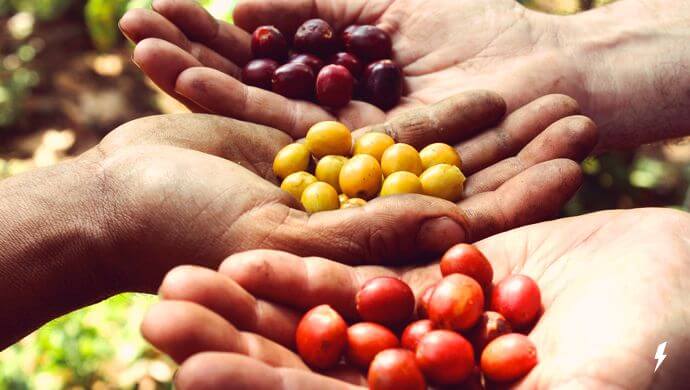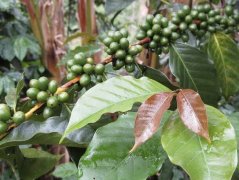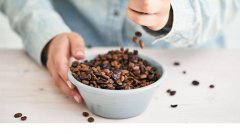What are the three waves of coffee? When will the fourth wave of coffee arrive?

Professional coffee knowledge exchange more coffee bean information please follow the coffee workshop (Wechat official account cafe_style)
Most coffee drinkers have heard of the third wave of coffee, so does anyone know what is the first wave and what is the second wave? How do these coffee waves make people feel different? When will the fourth wave of coffee arrive? Next, let's listen to the editor chatting.
The first wave: instant coffee
The first coffee wave lasted from the 19th century to the end of the last century, and the two world wars directly led to the huge demand for coffee. However, people at that time pursued convenience more than the taste and quality of coffee, so a large number of instant coffee and bottled coffee were the products of this period. Among them, the well-known brands Nestl é and Maxwell are the well-deserved big brothers in the instant coffee industry, and even now, they still occupy half of the instant coffee in the major supermarkets in China.
Second wave: coffee boutique
In the second wave of coffee, people began to pay more attention to the taste and quality of coffee. Consumers begin to care about the origin of coffee beans and the way they are roasted. Coffee is no longer a simple drink, drinking coffee has become a social way, even an attitude towards life. Starbucks and other brands are the representative brands of this period.
The third wave: coffee aesthetics
Mr. Han Huaizong gave six evolutionary elements of the third wave: pay attention to regional taste, avoid heavy roasting and shallow roasting, attach importance to low-pollution treatment, filter black coffee is the mainstream, origin directly to the roaster, scientific interpretation of coffee aesthetics. Representatives of coffee aesthetics: Intelligentsia Coffee&Tea, Stumptown Coffee Roasters and Counter Culture Coffee have also become popular cafes familiar to coffee fans in Europe and the United States.
Of course, the development of China's coffee market lags far behind other European and American countries. When the big country of coffee consumption represented by the United States is entering the third wave, the second wave of China's coffee market-boutique has just begun. At present, the popular consumption of coffee in Europe and the United States is only luxury goods and petty bourgeoisie life. Of course, as the domestic coffee producing areas such as Yunnan and Hainan gradually become famous in the international coffee market, the editor believes that the future popularization of coffee consumption is no longer far away.
Since Nestl é launched the first packet of instant coffee in 1938, the coffee industry has experienced three magnificent waves. With the escalation of consumption and the iteration of consumers of different ages, coffee has experienced over the years.
The first wave (1940-1960)
Instant coffee and the rise of Nestle Coffee
Before Starbucks, Nestl é was the absolute dominance of the coffee market.
In 1938, Nestl é launched the instant coffee brand, turning agricultural products into standardized products for the first time. By 1974, Nestle coffee accounted for 30% of the global coffee market. Unfortunately, Nestl é began to encounter bottlenecks and the instant coffee market came to a standstill.
Faced with this reality, Nestl é launched the Nespresso project in 1970. After six years of research and development, by 1976, the first coffee machine came out. After 10 years of polishing, in 1986, Nestl é launched its first capsule coffee maker.
In order to develop this machine, Nestl é invested a huge amount of research and development costs, before and after applying for more than 1700 patents. The machine was launched for only one purpose: to sell as much coffee as possible.
Although the hardware of the machine was developed by Nestl é, Nestl é did not make money from it. It chose to license the patent to the manufacturer.
Nestl é is only responsible for providing capsule coffee cups, with a gross margin of more than 50%-a typical "razor mode".
By 2011, Nestl é had built 300 experience stores in 60 countries, with sales of $3 billion that year. However, as more than 1700 patents owned by Nespresso expire, more and more companies can sell capsules for Nespresso coffee capsule machines, and many brands of coffee capsules are cheaper than Nestl é's. Nespresso continues to lose market share to competitors.
The second wave (1966-2000)
High-quality coffee, Starbucks has reached the peak.
In 1971, the second year after Nestl é launched the Nespresso program, three students from the University of San Francisco gathered to start Starbucks, which aims to make people drink good coffee, which set off the second wave of coffee.
At that time, the instant coffee on the market was overextracted coffee, which tasted bitter and rough, and could not be swallowed without the addition of cream and sugar as well as a lot of artificial colors. Starbucks uses heavily roasted Arabica beans to get good quality coffee even without sugar and cream.
Starbucks adds the experience attribute on the basis of the product function attribute, that is, "product + experience". It brings experience to coffee as an agricultural product for the first time, adds emotion and ritual sense, puts forward the concept of "real coffee", and forms a complete system of coffee knowledge, taste and training. This has become the key to Starbucks' success.
At the same time as Nestl é launched its first capsule coffee maker, Starbucks began to expand rapidly. In the 16 years from 1971 to 1987, Starbucks opened only seven stores. Over the next five years, Starbucks opened 119 stores in one go. Starbucks then opened 75 stores in 1993, 90 stores in 1994, and expanded from 1000 to 13000 stores in the 10 years from 1997 to 2007.
In 2011, Starbucks' revenue was $11.7 billion, far higher than Nestle Coffee sales.
Today, the pace of Starbucks' rapid expansion has not stopped. But Starbucks rivals are on the rise.
The third wave (2003-present)
Coffee aesthetic, the rise of boutique coffee
The third coffee wave sprang up around 2003.
In this wave, people pursue the ultimate experience and social fairness, and are not sensitive to price at the same time. The main representative enterprises of boutique coffee are:
Blue Bottle Coffee (blue bottle coffee)
Blue bottle Coffee, known as the commercial benchmark of artisanal cafes, has expanded from a bazaar trolley to 26 stores around the world, with investments from Internet bigwigs such as Twitter and Jack Dorsey, founder of Photo Wall. It is called the "Apple" of the coffee industry, and its founder James Freeman is also known as "the Jobs of the coffee industry".
Blue bottle coffee is considered to be the "unicorn" that is most likely to challenge Starbucks' supremacy.
Philz Coffee received $15 million in round B financing in 2015, with investors including Yahoo's chairman, Facebook's CTO and Apple executives.
Philz Coffee's slogan is "resist Starbucks tyranny" and aims to open 1000 stores.
In the third coffee wave, coffee is like a work of art, taking the experience to the extreme.
Although there are many companies in the market unilaterally claiming that the fourth wave of coffee is coming, to be honest, it is as influential as the previous three waves, with the rise of iconic brands or the popularity of concepts. Such a menacing fourth wave is not yet available. We don't know where coffee will go in the future, but we can be sure that a dominant market is unlikely, and consumers will have more and more choices.
END
Important Notice :
前街咖啡 FrontStreet Coffee has moved to new addredd:
FrontStreet Coffee Address: 315,Donghua East Road,GuangZhou
Tel:020 38364473
- Prev

What are the producing areas of boutique coffee? the list of boutique coffee bean producing areas in 2019
Professional coffee knowledge exchange more coffee bean information please pay attention to the coffee workshop (Wechat official account cafe_style) which boutique coffee producing areas? We all know that fine coffee pays attention to from seeds to cups, and there are very strict requirements for the original ecology of the producing area and the picking and treatment of farmers, so not all coffee producing areas in the world can produce fine coffee. Of course, Jing.
- Next

What are the characteristics of boutique coffee? What is the definition of boutique coffee?
Professional coffee knowledge exchange more coffee bean information please follow coffee workshop (Wechat official account cafe_style) front street coffee often hear fans ask, what is boutique coffee? What are the characteristics of boutique coffee? What is the definition of boutique coffee? Indeed, as a professional coffee practitioner, even front street coffee is sometimes found in a variety of beans known as boutique coffee on the market.
Related
- Beginners will see the "Coffee pull flower" guide!
- What is the difference between ice blog purified milk and ordinary milk coffee?
- Why is the Philippines the largest producer of crops in Liberia?
- For coffee extraction, should the fine powder be retained?
- How does extracted espresso fill pressed powder? How much strength does it take to press the powder?
- How to make jasmine cold extract coffee? Is the jasmine + latte good?
- Will this little toy really make the coffee taste better? How does Lily Drip affect coffee extraction?
- Will the action of slapping the filter cup also affect coffee extraction?
- What's the difference between powder-to-water ratio and powder-to-liquid ratio?
- What is the Ethiopian local species? What does it have to do with Heirloom native species?

